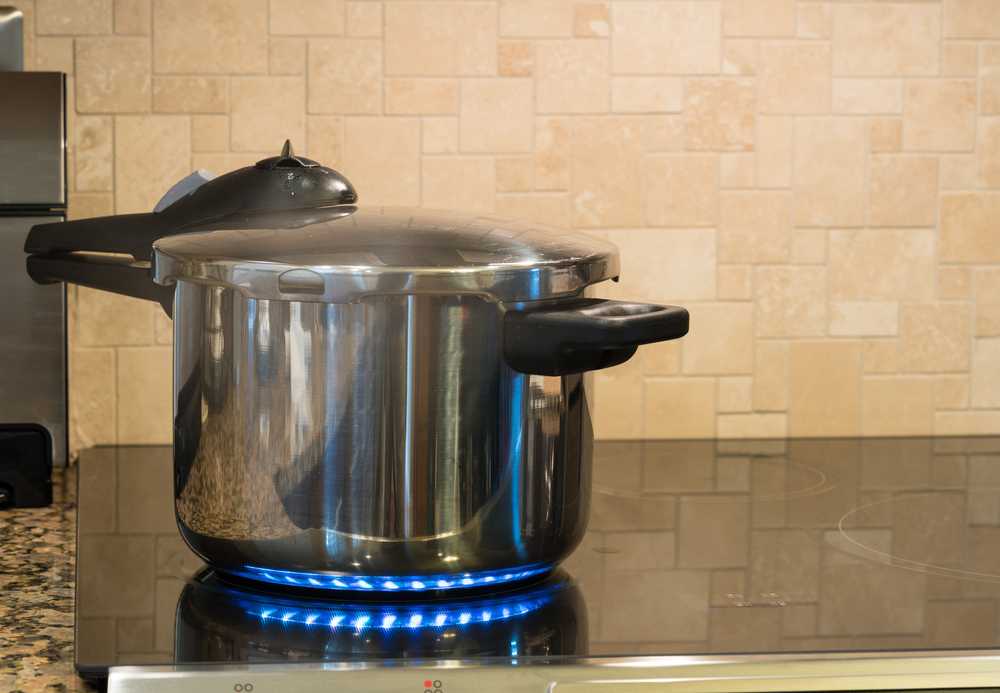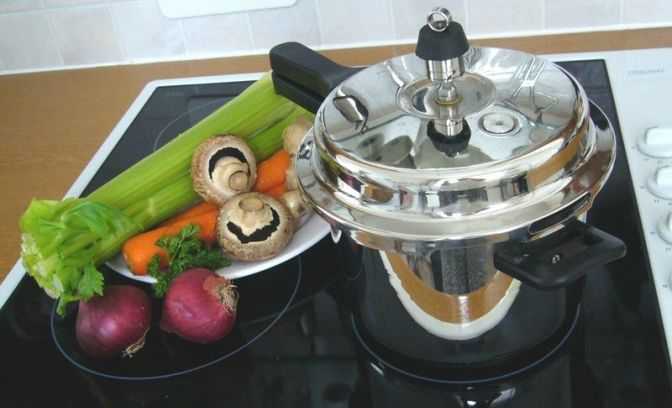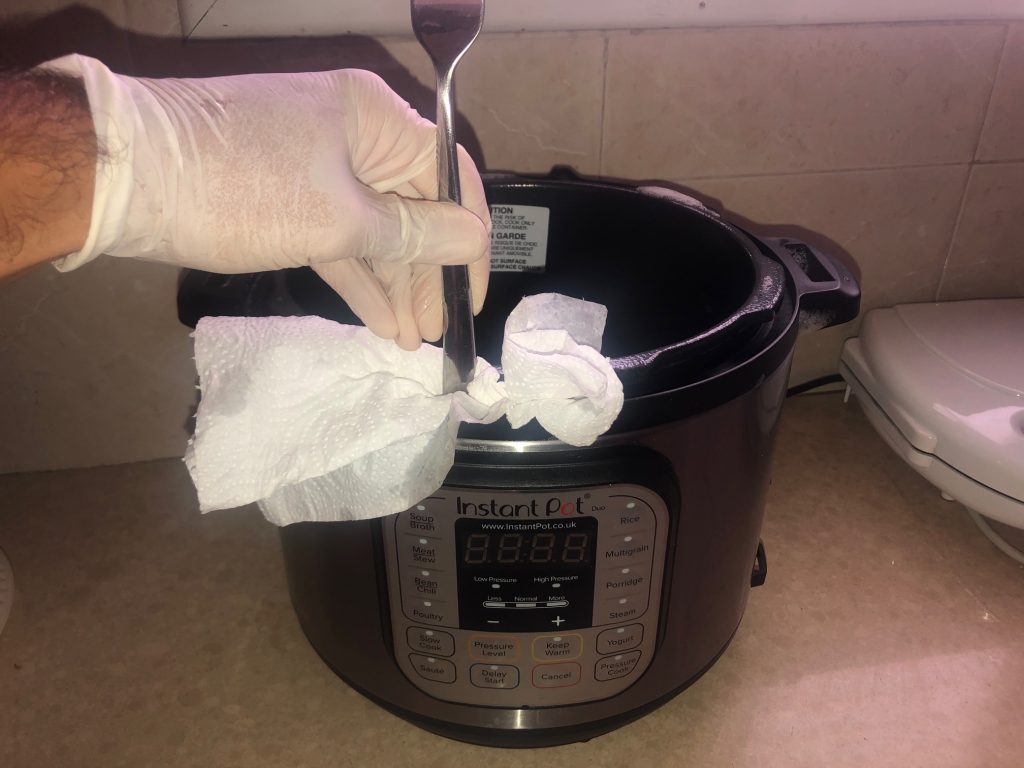Raise your hand if you feel good about the idea of setting a huge stainless steel pressure cooker filled to the brim with meat and water on top of your glass stop stove?
Those things are heavy! Sounds dangerous - will the glass break?

I know exactly what you are thinking because I have dealt with big pressure cookers, the kind you do your canning in. I've also cooked on glass top surfaces and simply setting saute pans on them seems a little dicey at times.
In this article however I hope to set your mind at ease...
and teach you something too.
Many pressure cookers are just fine for use on a glass cooking surface but there are some things to know before you try it at home.
So let me explain:
Table of Contents
Can you use a Pressure Cooker on a Glass Top Stove
As mentioned in previous articles, pressure cookers are appliances which can greatly generate heat. Basically, these appliances are able to produce temperatures of 200 degrees to 250 degrees using the super-heated water which is a result of the enclosed nature of the pressure cooker and the steam that circulates within the container.
In my last article it is discussed in detail that since most pressure cookers are made of metal, specifically aluminum, the heat transfer from within the container to the metal itself might cause damage to surfaces which are poor conductors of heat.
With that being said, is it safe for one to use a pressure cooker on a glass stove? Will this result in damage to both the appliance and the stove or either object? If so, how do we avoid it in the first place? Should you be using an electric pressure cooker instead? These are the questions that this article will seek to answer.

Glass Top Stoves: How Different Are They Anyway?
Before we proceed any further, let us begin a brief discussion on glass top stoves and their characteristics. Glass top stoves were developed in the advent of the 21st century. The sleek, modern and perhaps even futuristic design of the stove made it a big seller for most cooks. What is more impressive is that the glass top stove functions as beautifully as it looks. The glass material of these stoves is called polycrystalline.
The main feature of glass top stoves is that it does not produce flames. Metals coils underneath the glass heat up electrically and transfer to the glass. Others use infrared-emitting halogen bulbs instead. The glass in turn heats up and radiates the said heat to the pots or pans on top.
Metal is the best conductor of heat with silver taking the top spot. Glass on the other hand, does not do that well in the heat-conducting department. In fact, rock and water are much better conductors of heat. Thus, cooking on a glass top stove definitely takes more time as compared to other stoves.
Glass top stoves, like all stoves also have features that allow the user to control the temperature generated. The only drawback is that since glass is a poor conductor of heat, the response time to changes also takes quite some time. To work around this, manufacturers made the coils and heating agent cycle on and off. In other words, heat does not pass through the coils/bulbs the whole time.
Lastly, these glass top stoves are very easily to clean due to their flat surface. One simple wipe of the surface and it would look as good as new.

Pressure Cooking on a Glass Top Stove
The biggest risk of using pressure cookers on glass top stoves is if the heat generated by the pressure cooker might cause the glass top stove to break. This is not the case as glass top stoves are durable and can handle heat up to 700 degrees Celsius.
What most cooks and manufacturers worry about though is that aluminum pressure cookers may melt. As a result, it is highly recommended that one only use a stainless steel pressure cooker when using glass top stoves. Aluminum may also leave residue on the glass top which may affect the performance of the glass top stove.
On a side note, one should properly remove a pressure cooker off a glass top stove. The pressure cooker should be lifted and not dragged off the surface as to avoid scratching the surface of the stove.
Remember - Pressure Canning Shouldn't be Done on a Glass Stove Top
Keep in mind that this article discussed the safety of pressure cooking and not canning on a glass top stove. It should mentioned that one should NOT can on a glass top stove for three primary reasons.
Firstly, some containers have concave bottoms. This means that the area of weight is concentrated on a much smaller surface as compared to one with a flat surface. Combined with the second reason, that jars weigh heavier than food, may cause the glass to break. Lastly, since the heat of glass top stoves cycle on and off, one would not be able to properly execute the canning process.
Thus, canning is not recommended on a glass top stove.
I water bath can on my electric. Glasstop stove never any issue at all!
I recently purchased a new water bath canner and the label on it reads do not use on a glass top stove. Never canned before.
Do you use an Aluminum or stainless steel pressure cooker?
Can you recommend another cooktop instead of Cadco PCR-1S Professional Cast Iron Range, Stainless It is impossible to find.